There are a few features to look out for when you're shopping for the best laptop for 3D editing, graphic design or video editing. A creator laptop needs to be a high performance mobile workstation, and must be reliable. We discuss the specifications and features you need to look for before you buy.
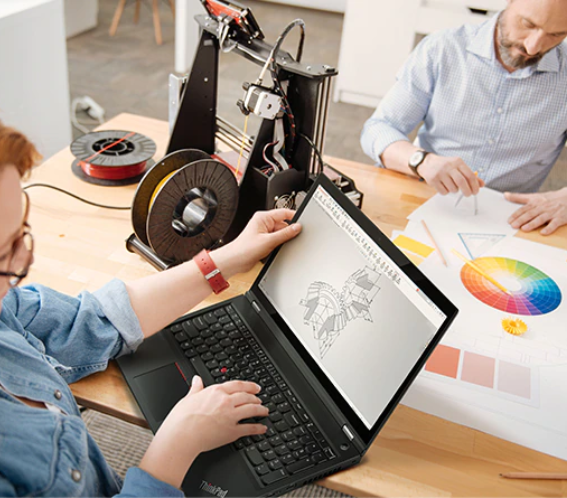
More people are working remotely than ever before, either fully remote and working at home or in a hybrid role that requires periodic visits to the office. For creators who spend all week in the office or studio, a modern laptop is powerful enough to run the most demanding applications, and flexible enough to adapt to any project situation.
In all of these scenarios, a creator laptop is the ideal solution, offering the user a versatile, reliable mobile and desktop workstation.

A creator laptop should offer almost the same performance as a desktop creator workstation, though some small sacrifices in hardware performance are to be expected. A laptop cannot compete at the same level as a desktop PC, but benchmarks show they are very efficient and do not affect productivity if the right specification is used. A mobile workstation can run the very same applications as a creator PC, with some developers have adapted software to be more portable and less demanding on laptop hardware.
For most creators, a PC is a suitable option for demanding workloads and complex workflows, especially if a static workspace is needed, but there are a number of situations where the flexibility of a laptop is needed. Having the ability to create, upload and download work and files anywhere, as well as being able to collaborate with teams on the move, are all great reasons for choosing a laptop.
To maximise productivity, most creative professionals use a combination of desktop and laptop to complete their work, and take it with them to clients and the office. With an unprecedented rise in hybrid and remote work, it is logical that a hybrid workflow has now replaced the traditional "work at a desk" scenario.
Having a creator PC to take on the intensive and demanding design and rendering work, then using a workstation laptop in the workplace or on the move is incredibly efficient and is suitable for any kind of role. Making project changes "on-the-fly" is much easier, and creative meetings can be extremely productive. Modern portable storage devices are capable of high-speed file transfers, and cloud solutions enable you to share and access large files anywhere in the world, so there is no limitation on location or creating the perfect workflow to suit your needs.
The hardware in creator laptops is not dissimilar to a gaming laptop, but there are some features to look out for that are geared more towards creative professionals.
CPUs in creator laptops that are from the latest generation of Intel and AMD releases are capable of incredibly high performance for intensive processing, rendering and exporting. Designed to operate at maximum throughput while remaining energy efficient, mobile processors are one of the major innovations in computing. New silicon design and architecture means more cores, more threads, higher clock speeds and ultimately - faster workflows for creators.
Alder Lake and Intel Xeon processors are best equipped for laptop creative work, with multiple cores for processing complex workloads, and efficiencies to balance productivity and power usage. Intel Xeon processors are often paired with superior performance, purpose-built creator graphics cards rather than RTX mobile GPUs, ensuring absolute maximum throughput is achieved.
AMD 6000-series mobile CPUs are built for multipurpose usage, but are very capable processors when used in creative workflows. High end 6000-series processors maintain up to 8 high performance cores and 16 processing threads which can scale from 45 watts to 15 watts, making them perfect for mobile workstations where battery life is a premium.
In terms of performance, NVIDIA RTX mobile GPUs are
With innovations such as NVIDIA Studio, available to all mobile RTX graphics cards, creators are able to tap into the latest hardware accelerations including: -
NVIDIA Studio Drivers are compatible with GeForce GTX 10-series and up, all GeForce RTX series, TITAN V and RTX, NVIDIA RTX series and also compatible with all Quadro products released since 2012.
With large files and demanding applications constantly in use, creators find 32GB - 64GB RAM especially useful, and with higher memory capacity comes maximum productivity. High speed, low latency memory ensures optimal application speed and opening/saving/exporting files is seamless and smooth.
Cloud storage, portable HDD storage and high capacity internal hard drives are essentials for mobile creators, along with Solid State Drives (SSD) ensuring most-used applications load quickly and reliably. Creators will also install plugins, add-ons and assets for applications on their SSD, ensuring they have fast access to effects and features when they need it.
High speed USB and Thunderbolt connectivity is paramount for creators who use laptops, being able to transfer extremely large files quickly, safely and securely. Being able to connect to essential accessories such as graphics tablets and other devices is also extremely important, so an adequate number of high speed USB ports are included in creator laptops.
For creators, only high definition IPS, IPS LED, Mini-LED and OLED displays offer high resolutions, excellent colour representation, optimal brightness, high contrast ratios and the best viewing angles.

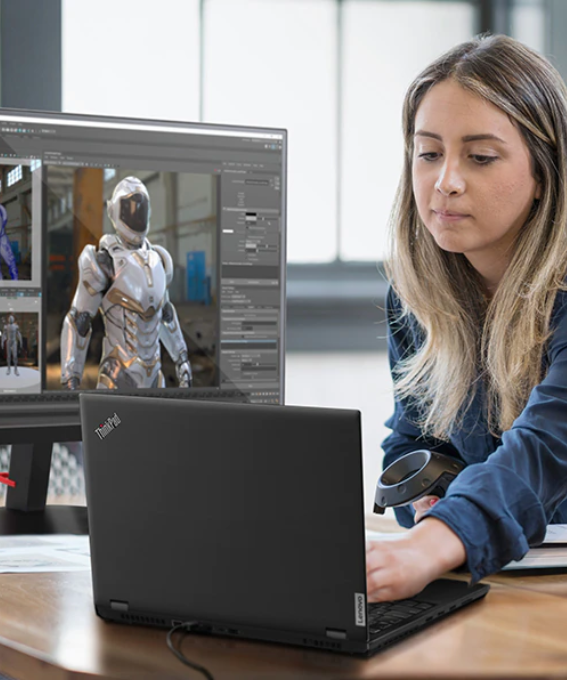
Creators who use applications like AutoCAD, Autodesk Maya, Blender or Unreal Engine need a laptop with a specification that includes a high performance CPU and GPU, as well as fast, high capacity memory and storage. The varying applications in 3D work mean workstation laptops need to be able to cope with extended periods of intensive workloads as well as rendering final productions, so NVIDIA RTX graphics cards are ideal, enabling creators to take advantage of NVIDIA Studio's hardware accelerations.
From creating designs for 3D printing to producing architectural plans using CAD software, 3D game asset design to movie quality CG animation and everything in between, versatility must be matched with performance.
Both the processor and graphics card will bear the load in many ways, but actual production work requires high speed, high capacity memory and fast storage. A combination of this hardware enables quick previews of workflows, and a final rendering relies on the performance of the CPU and GPU.
Though illustration and graphic design applications do not require as high a specification as more intensive workloads in 3D design or video editing, Adobe Photoshop, Adobe Illustrator and similar software also comes packaged with effects and rendering options that will lean on the processor or GPU.
Memory and storage also need to be adequate for large format files while they are being worked on and saved/loaded, so fast RAM and SSD are key here. For accurate colour representation and depth, a high quality, high resolution LED display is also required.
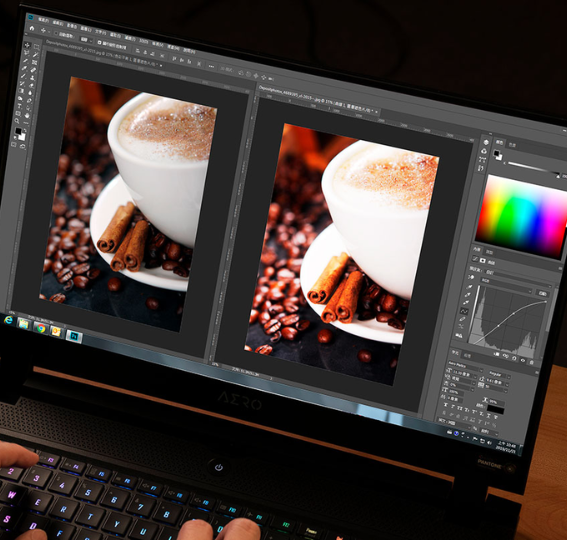

Photographers are perfect use cases for laptops, doing most of their work on the move and on location. Whilst the specification should absolutely be adequate for photo editing software like Adobe Photoshop, and able to store a large number of RAW and processed image files, lightweight portability is a critical feature and benefit of the photographer.
In terms of specification, a similar specification to illustrator/design laptops is recommended, with a large display that represents as true to real life colours and lighting as possible.
Excellent connectivity is also important to photographers, so fast USB, SD Card and Thunderbolt ports are highly recommended.
Depending on the software used, video editing will require either a GPU-intensive or CPU-intensive workflow. For CPU-intensive software, a high core count and high thread count is important. For GPU-intensive work, an NVIDIA RTX graphics card will allow access to NVIDIA Studio drivers for productivity increase.
It is always best to check the specific software to see which of the two is needed for extended periods, though creator laptops often have both high spec GPU and CPU to ensure maximum productivity across applications. 32GB of RAM memory is recommended when using demanding applications like Adobe Premiere Pro, DaVinci Resolve and Adobe After Effects, which - if expandable - should be upgraded to 64GB if budget permits. This will allow large format files (4K/8K) to be loaded, saved and exported quickly, without any drop in overall performance.
Besides these core components, a large format display with high resolution and excellent colour representation is needed, along with good connectivity options for transferring large files. Though an SSD and HDD are recommended, portable HDD solutions also ensure optimal productivity.
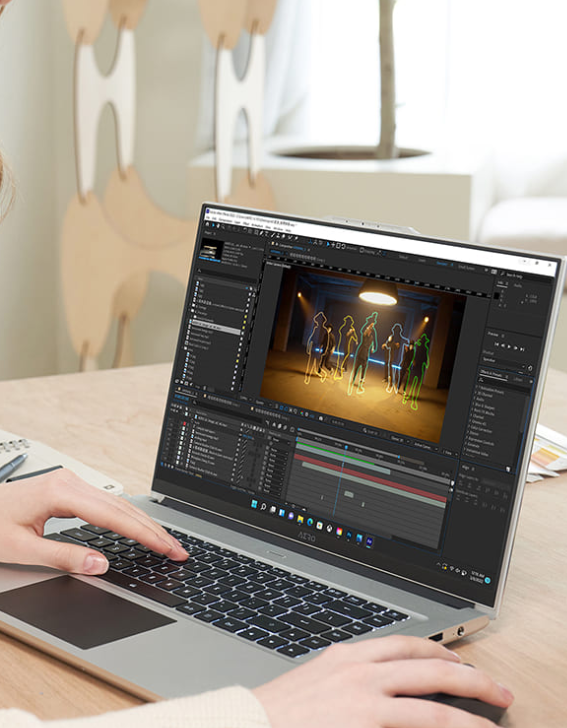

Whilst laptop monitors are indeed high performance and offer large format and high resolution, a creator monitor offers much more. Monitors designed for creative professionals are ergonomic, and can be positioned at much more comfortable angles and distances, with C-Clamps to attach to desks, or using pneumatic stands and swivel mounts.
As for specifications, you can expect IPS 4K and 8K resolutions, HDR features, adjustable brightness, colour and contrast for excellent colour representation, as well as high colour gamuts. Both LG and ASUS offer some of the best creator monitors in the industry, designed with professionals in mind.
Connecting high accuracy mice, graphics tablets, professional keyboards and printers to a creator laptop is also essential, using high speed USB connectivity and wireless connectivity on the Windows OS platform. High specification, responsive accessories enable creators to use precision and apply the highest amount of detail in their work, from top brands such as Logitech, Wacom, Microsoft and Cherry.
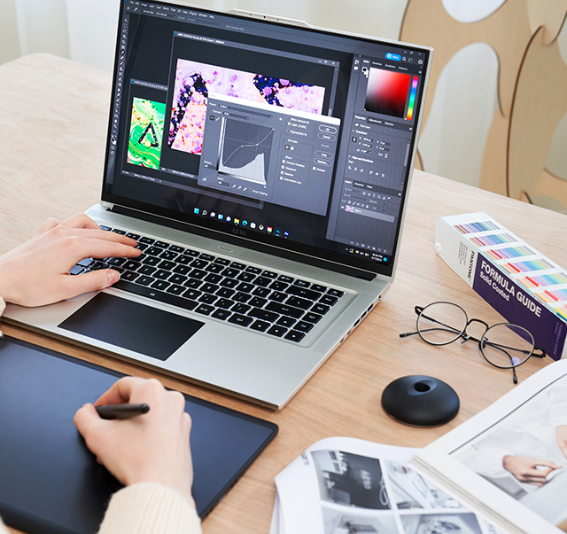
Yes. We offer various finance options, with flexible payments depending on the price of the workstation laptop.